-
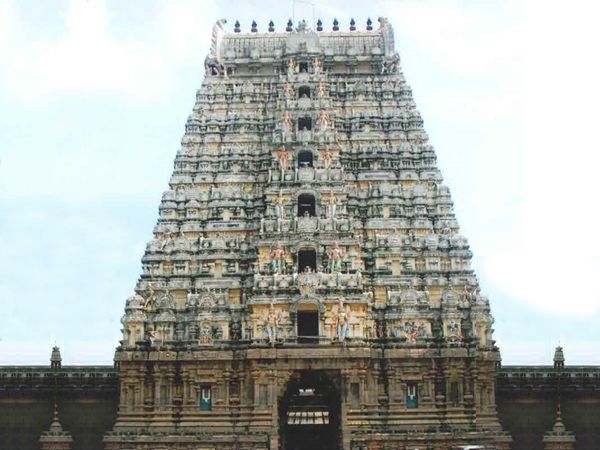 Sree Padmanabhaswamy Temple
Sree Padmanabhaswamy Temple
Shree Padmanabhaswamy Temple is located in Thiruvananthapuram, Kerala, India . The temple is built in Dravidian style of architecture associated with the temples located in the neighboring state of Tamil Nadu, featuring high walls and a 16th-century Gopuram. While the Moolasthanam of the temple is the Ananthapuram Temple in Kasargod, architecturally to some extent, the temple is a replica of the Adikesava Perumal temple located in Kanyakumari District. It is the richest Hindu temple in the world. In fact, in terms of precious metals and precious stones, it is by far the wealthiest institution and place of worship of any kind in the recorded history of the world.
-
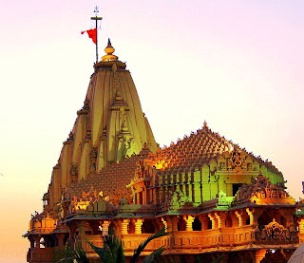 Shree Somnath Mahadev Mandir, Veraval, Gir Somnath, Gujarat
Shree Somnath Mahadev Mandir, Veraval, Gir Somnath, Gujarat
Somnath temple is one of the most important temples in the country and is considered Aadi or the first of the twelve 'Jyothirlingas'. The Sivalinga here is Swayambhu or Natural formation. Somnath temple was referred to in many ancient texts and is one of the richest temples of those times.
-
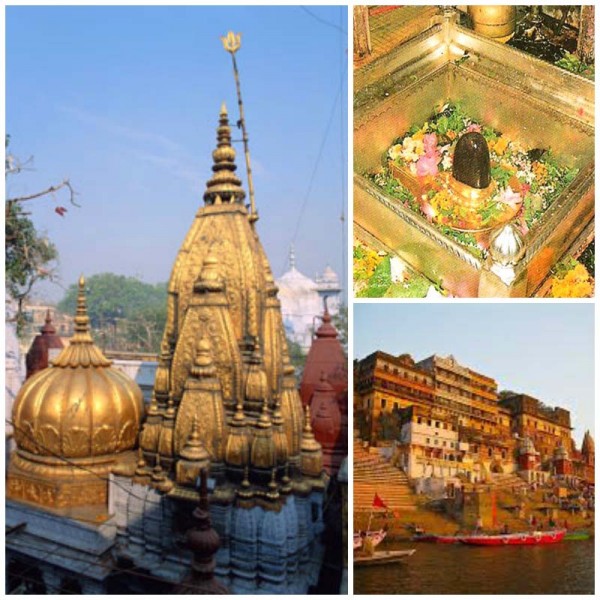 Shri Kashi Vishwanath Mandir, Varanasi, Uttar Pradesh
Shri Kashi Vishwanath Mandir, Varanasi, Uttar Pradesh
The Temple of Kasi Vishwanath is perhaps the most popular temple in the country and is renowned the world over. The temple is in the holy town of Benares or Varanasi on the banks of the sacred River Ganges. The temple forms part of the twelve "Jyothirlinga" Shrine framework of temples dedicated to Lord Shiva and the Siva Linga here is said to be the first "Jyothirlinga".
-
 Vaishno Devi Temple,Katra
Vaishno Devi Temple,Katra
Vaishno Devi Temple is the most-sought after pilgrimage of the Hindus. Located at Trikoot Parvat, Mata Vaishno Mandir is the holiest shrine of India and it is famous all over the World. The temple is accessible by a journey of 13 kms from Katra. Katra is a small town that falls in Udhampur district of Jammu. From Jammu, Katra lies at a distance of 50 kms.
-
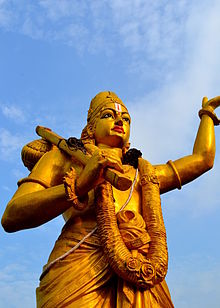 Sri Thallapaka Annamacharya, Thallapaka
Sri Thallapaka Annamacharya, Thallapaka
The 600th Annamacharya Jayanthi celebrations were completed in Rajampet on 22nd May 2008. The Chief Minister of Andhra Pradesh, Dr. Y.S. Rajasekhara Reddy unveiled the 108 feet statue of Sri Thallapaka Annamacharya located on Tirupati-Kadapa bypass road in Rajampet on May 22nd.
-
 Sri Kodanda Rama Swamy Temple, Vontimitta
Sri Kodanda Rama Swamy Temple, Vontimitta
Vontimitta Sri Kodanda rama Swamy temple is a famous Hindu temple in Andhra Pradesh state is dedicated to Lord Rama. The temple is present in Vontimitta town of Rajampet taluk in YSR Kadapa District.
-
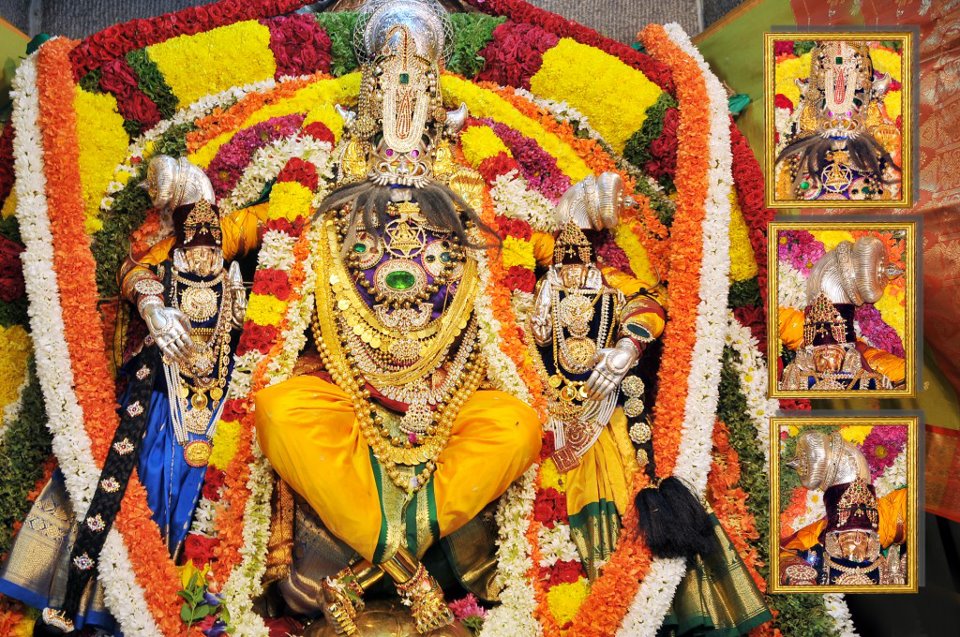 Khadri Lakshmi Narasimha Swamy Temple, Kadiri
Khadri Lakshmi Narasimha Swamy Temple, Kadiri
Kadiri Lakshmi Narasimha Swamy Temple is located in the southeastern part of Anantapur district in Andhra Pradesh, India. Lord Narasimha at Kadiri is swayambhu emerging from the roots of Khadri tree. He appears here as Ashta Bahu Narasimha (having eight hands) tearing Hiranyakasipu. We can see Prahlada standing beside him with folded hands.
-
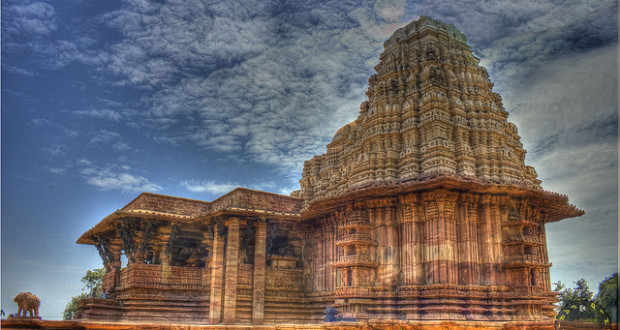 Ramalingeswara Temple, Warangal
Ramalingeswara Temple, Warangal
The Ramappa Temple, also known as Ramalingeswara temple is located in the Palampet village at a distance of about 77 km from Warangal. The temple is another example of Kakatiya Dynasty. This is one of the temples which was named after its chief architect. The temple is dedicated to Lord Shiva and the architecture of this temple is similar to the famous Ghanpur Group of Temples of Warangal itself. The temple is a master piece of Kakatiyan architecture and everyone must visit to get a glimpse in the life of Kakatiya people.
-
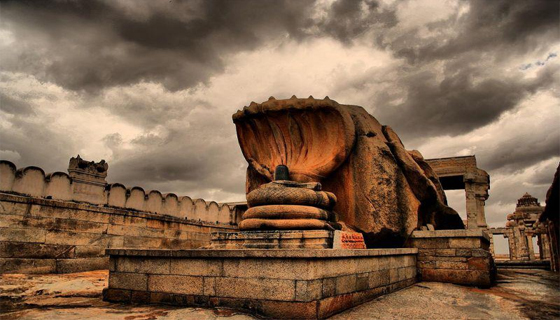 Lepakshi Temple, Lepakshi
Lepakshi Temple, Lepakshi
Lepakshi is a village in the Anantapur District of Andhra Pradesh, India. It is located 15 km (9.3 mi) east of Hindupur and approximately 120 km (75 mi) north of Bangalore. Lepakshi is culturally and archaeologically significant as it is the location of shrines dedicated to Shiva, Vishnu and Veerabhadra which were built during the Vijayanagara Kings' period (1336-1646).
-
 Ram Mandir, Ayodhya
Ram Mandir, Ayodhya
Ayodhya is the place where Lord Sri Ram was born and ruled for many years (after killing Ravana). There was an existing temple built in this city, proofs of which have been found during ASI excavation. More than the physical temple and exact spot, the important point is the association of this city (town) with Lord Sri Rama, the most important incarnation of Lord Vishnu.
-
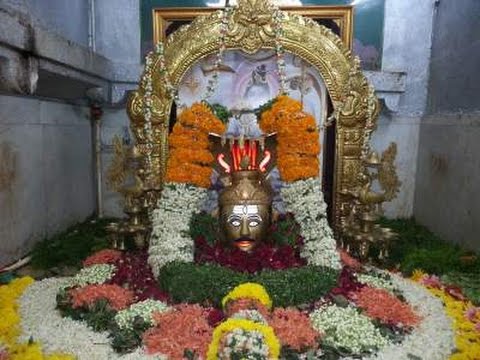 Siddeshwara Swamy Temple, Warangal
Siddeshwara Swamy Temple, Warangal
Siddeshwara temple has a rich ancient history associated with it. The temple was built in 3rd century A.D. Even though built in a time period when life was totally different from today's world, people fascinate about the architecture of this temple a lot.
-
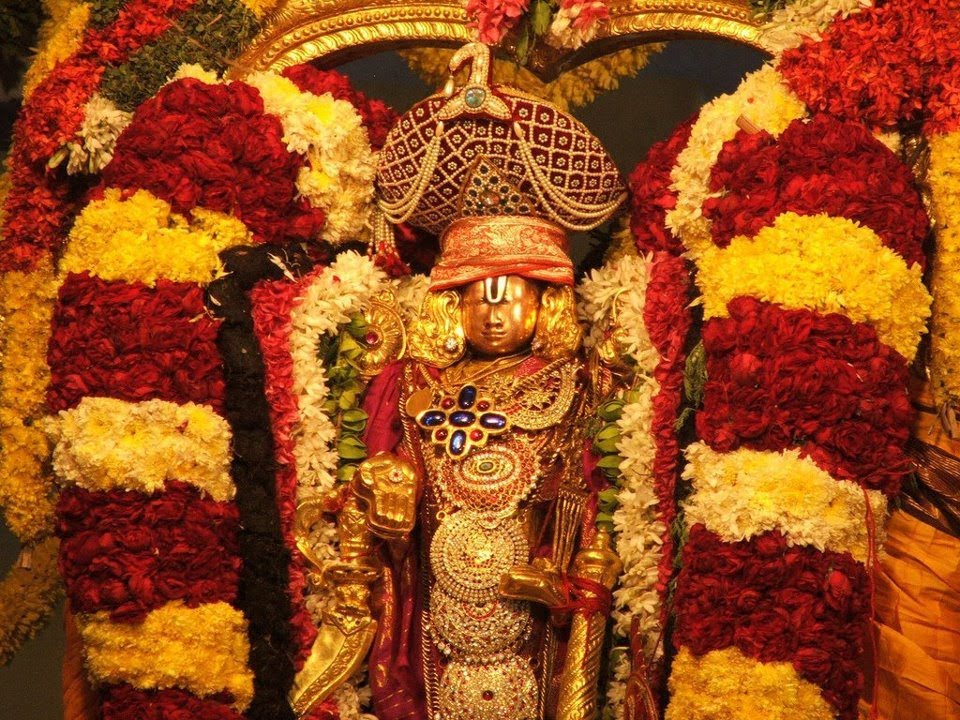 Sri Kakuleswara Swamy Temple, Srikakulam
Sri Kakuleswara Swamy Temple, Srikakulam
Srikakulam has a rich history and is the first capital of the Andhra Kingdom. The ancient Srikakuleswara Swamy temple is located on the banks of River Krishna and is considered to be the 57th of 108 Divya Desams, holiest of shrines dedicated to Lord Vishnu, by Vasihnavaites. The temple has a rich cultural and historical legacy and is one of the oldest temples in the south. Great poets like Srinatha Kavi Sarvabhoumudu, Kasuala Purushottama and Narayanatheertha, the composer of Sri Krishna Leela Tharangini praised the temple in their works. The temple is located in the mandal of Ghantasala, which is a popular Buddhist center.
-
 Sri Mallikharjuna Swamy Temple, Komaravelli
Sri Mallikharjuna Swamy Temple, Komaravelli
The Lord is believed to have manifested as Sri Mallikharjuna Swamy and made Komaravelli his abode in the eleventh century CE. The Lord married Golla Ketamma from the Yadava community and Medalamma from the Linga Balija community, which explains the association of those communities with the worship services of the Lord.
-
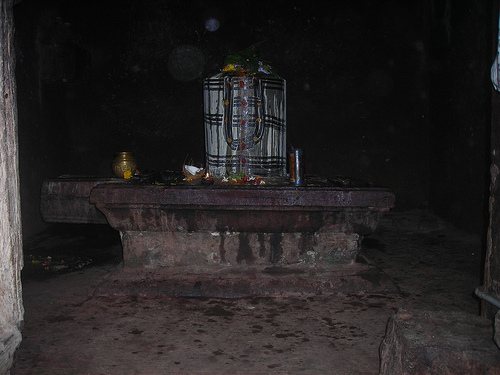 Srimukhalingeswara Temple, Sri Mukhalingam
Srimukhalingeswara Temple, Sri Mukhalingam
Srimukhalingeswara temple, dedicated to Lord Shiva, is a major pilgrimage center in the state. It is located in a village known by the same name, 45-odd kilometers to the north of Srikakulam, on the banks of the holy Vamsadhara River. The temple is known for artistic splendor and stands out as one of the finest examples of Kalinga architecture. Ornate sculptures adorn the Gopurams and walls of this shrine.
-
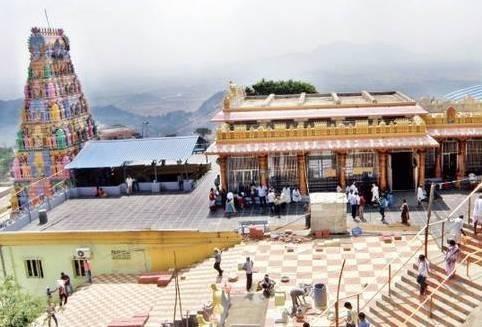 Trikooteswara Temple, Narsaraopet
Trikooteswara Temple, Narsaraopet
The temple can be dated to the period of the Chalukyas and is said to be built by an ardent devotee named Elchuri Veeresalingam. Over the course of time, the temple fell under the patronage of the Velama Zamindars of Narsaraopet. who used to worship the Lord with great devotion. They made significant contributions to the temple and the tradition continued until the Zamindari system was abolished after India gained independence.
-
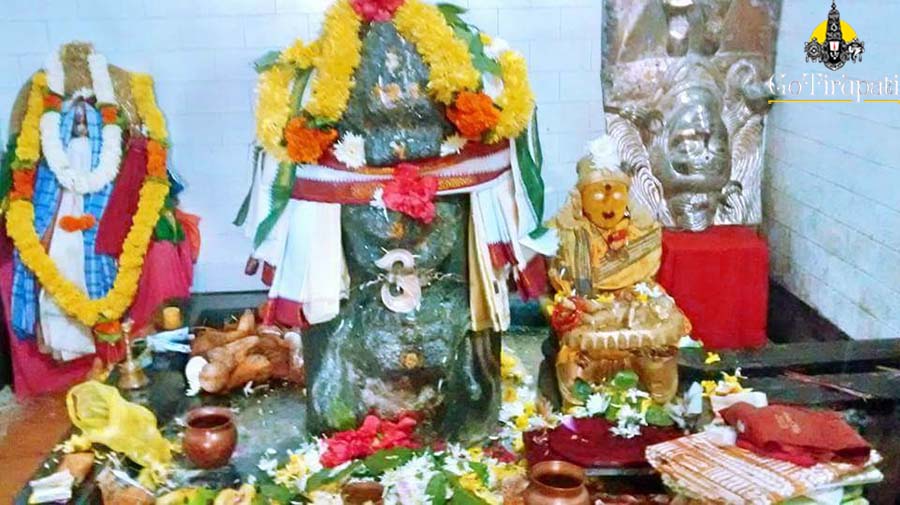 Sri Shakteeswara Swamy Temple, Yanamadurru
Sri Shakteeswara Swamy Temple, Yanamadurru
Sri Shakteeswara Swamy Temple is Located at Yanamadurru just 5KM away from Bhimavaram.Sri Shakteeswara Swamy has been discovered by excavations many years back. During the excavations Lord Shiva Statue along with Sri Parvathi his 3 month old son Sri Subramanyeswara Swamy are found on a single platform.The Oldest name of Yanamadurru village is Yamapuri later Yamunapuram and now Yanamadurru.
-
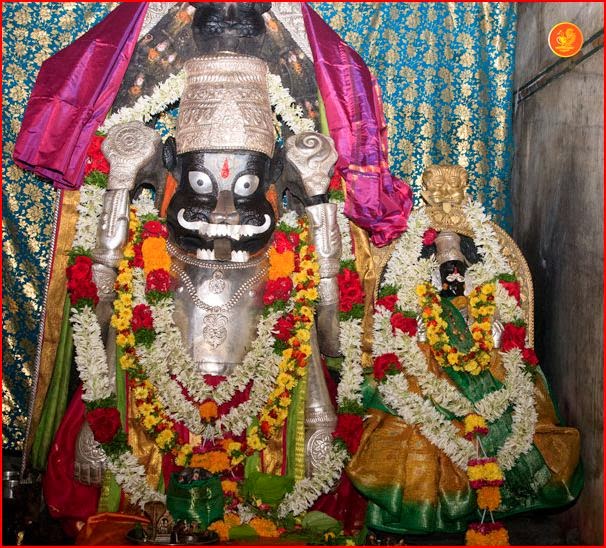 Sri Lakshmi Narasimha Swamy Devasthanam, Dharmapuri
Sri Lakshmi Narasimha Swamy Devasthanam, Dharmapuri
Sri Lakshmi Narsimha Swamy's kshetram in Dharmapuri is one among the nava Narsimha Kshetrams in Andhra Pradesh. Prior, this place was directed by the ruler Dharma Varma henceforth the place is known as Dharmapuri. According to the chronicled foundation of the place, however this refuge existed decidedly before 850-928 BC, it was beat by the Bahumani Sultans in the year 1422-1436 and again in the seventeenth century, the asylum was patched up. In this refuge, swamywaru is cut in Shaligram shila
-
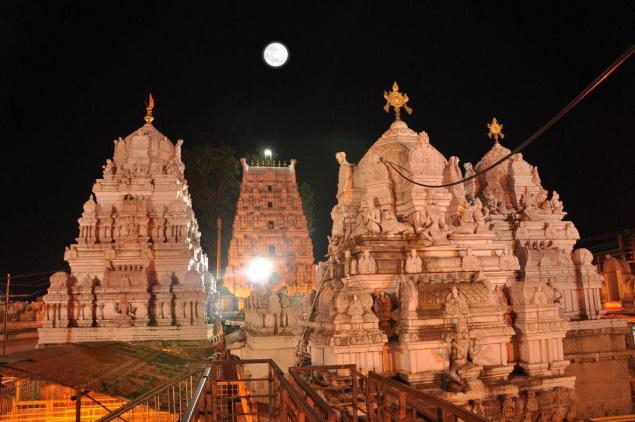 Sri Raja Rajeshwara Temple, Vemulavada
Sri Raja Rajeshwara Temple, Vemulavada
Sri Raja Rajeshwara Swamy Devasthanam ? Abode of Lord Eashwara ? at Vemulawada village of Karimangar District in Andhra Pradesh State is one of the ancient and famous Shivate temples
-
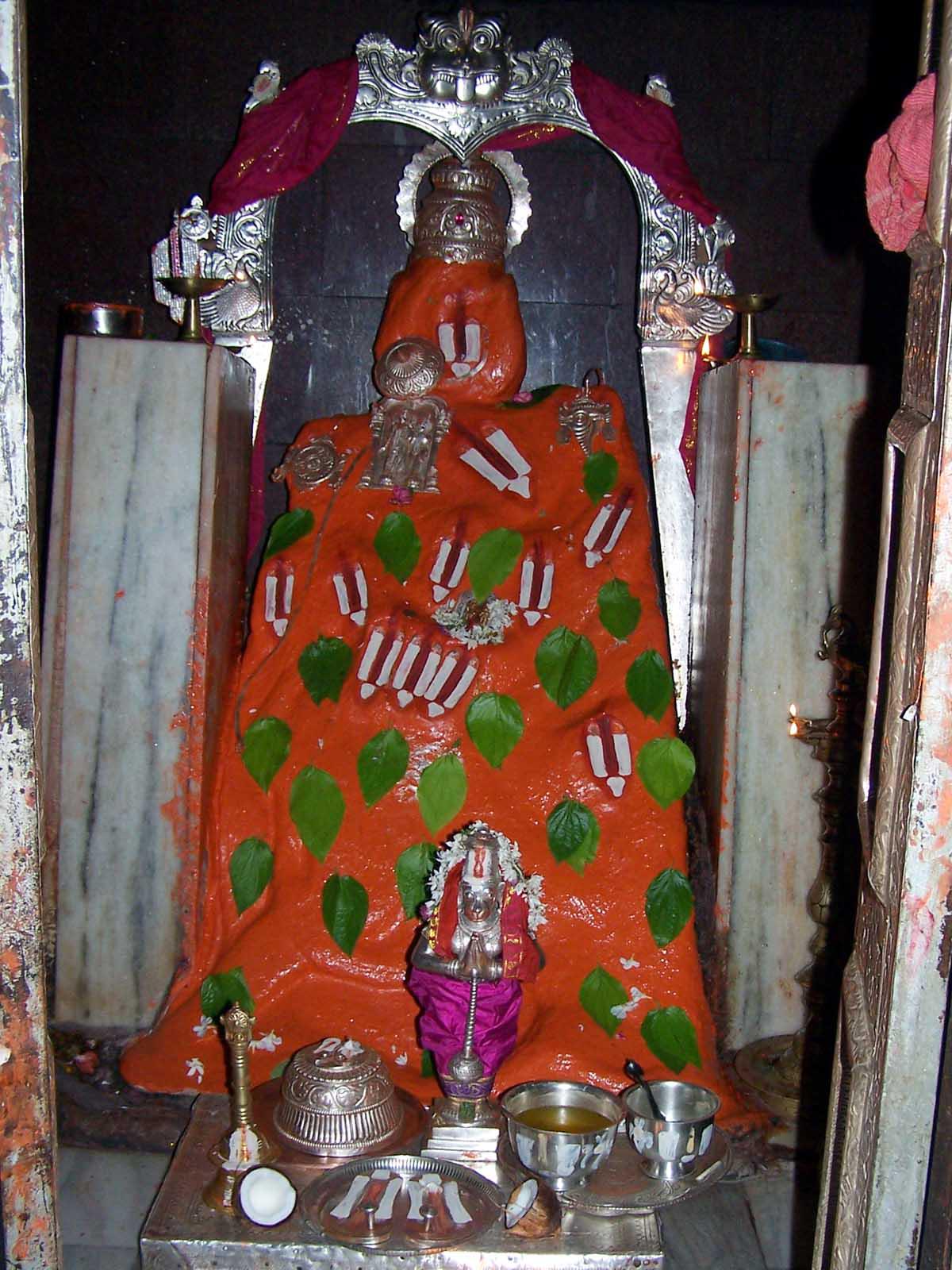 Sri Bhaktha Anjaneya Swamy Temple, Kondagattu
Sri Bhaktha Anjaneya Swamy Temple, Kondagattu
Sri Anjaneya Swamy vari Devasthanam his situated on hill calld Kondagattu Amidst of hills and forest aria at a distance 40 K.M. from Karimnagar and 16 K.M from Jagityal.The presiding deity, Sri anjaneya Swamy varu is said to be Swayambhoo as seen from the silasasana which is available on the external wall ao the main temple.It shows that parents of singam Balaiah i.e Singam Sanjeevudu and Ashamma from Kodimyal Village had Constructed a temple.
-
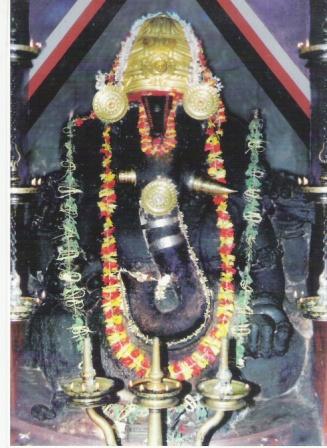 Shree Madanantheshwara Siddhivinayaka Temple, Kasaragod
Shree Madanantheshwara Siddhivinayaka Temple, Kasaragod
Madhur Ganapathi Temple is also known as Madur Madanantheswara Siddhi Vinayaka temple. It is one of the famous temples in North Kerala which is 8 km?s away from Kasargod town. It is located in the bank of river Madhuvahini. In front of the temple, Madhuvahini River is flowing and all other sides are surrounded by the paddy fields and coconut trees. The locality of the temple has greenery picturesque which is very natural and makes enthusiasm about the place. The main presiding deity is Lord Shiva.
-
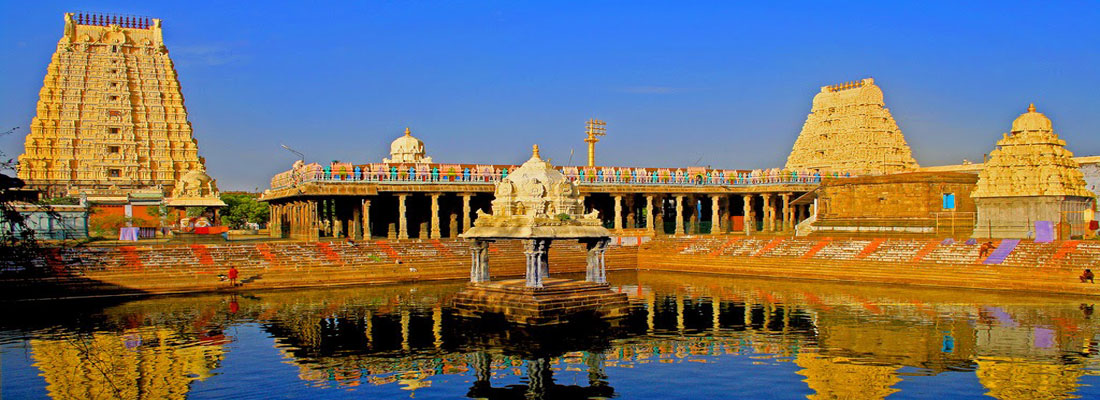 Ekambareswarar Temple Kanchipuram, Tamilanadu
Ekambareswarar Temple Kanchipuram, Tamilanadu
Ekambareswarar Temple is one of the famous Hindu temples dedicated to Lord Shiva, located in Kanchipuram in the state of Tamil Nadu, India.
It is one of the five major Shiva temples or Pancha Bootha Sthalams (each representing a natural element) representing the element - Earth. The other four temples in this category are Thiruvanaikaval Jambukeswara (water), Chidambaram Natarajar (ether), Thiruvannamalai Arunachaleswara (fire) and Kalahasti Nathar (wind).
-
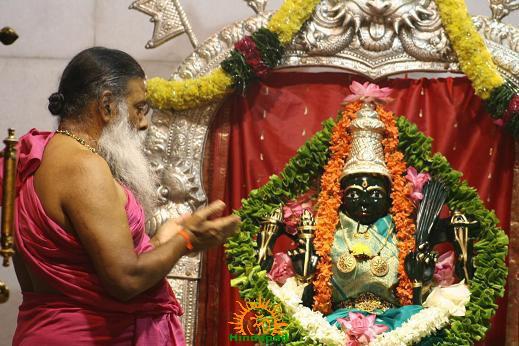 AstavaDasha Shakti peetham Shankari Devi, Sri Lanka
AstavaDasha Shakti peetham Shankari Devi, Sri Lanka
Shankari Devi sanctuary in Tricomalee, Srilanka is a noticeable sanctuary for Hindus. However, it is most once in a while went by and it is minimum prominent in all AstavaDasha Shakti peethas.Shankari Devi Temple is arranged in an east drift town of Srilanka, Tricomalee
-
 Sri Chamundeshwari Temple, Mysore
Sri Chamundeshwari Temple, Mysore
The Chamundeshwari Temple is a Hindu sanctuary situated on the highest point of Chamundi Hills around 13 km from the castle city of Mysore in the territory of Karnataka in India. The sanctuary was named after Chamundeshwari or Durga, the furious type of Shakti, a tutelary god held in love for quite a long time by Mysore Maharajas
-
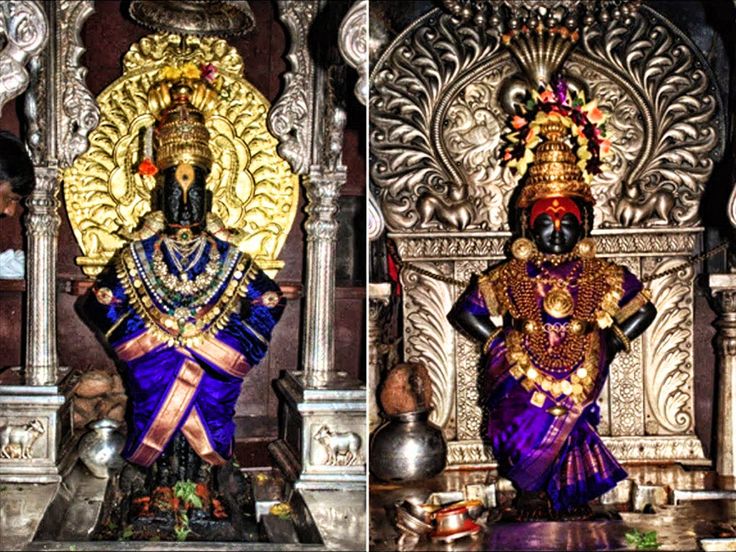 Vitthal Temple, Pandharpur, Solapur, Maharashtra
Vitthal Temple, Pandharpur, Solapur, Maharashtra
It is a holy shrine dedicated to Lord Vitthal and his consort Rakhumai. Lord Vithal is an incarnation of Lord Vishnu. The temple stands on the banks of the Chandrabhaga River. The main entrance of the temple faces towards the Chandrabhaga river. A tomb of sage Namadev is seen at the entrance. A shrine of Ganesh is built inside the temple which is followed by a small assembly hall where prayers are performed. After climbing a few steps, devotees can have Mukh darshan of Lord Vittala.
-
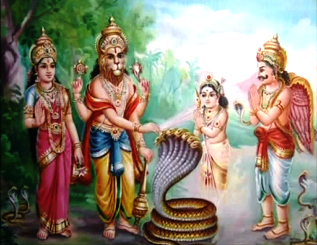 Ghati Sri Subramanya Temple, Doddaballapur, Karnataka
Ghati Sri Subramanya Temple, Doddaballapur, Karnataka
Ghati Sri Subramanya Temple is a standout amongst the most prominent sanctuaries among the hundreds that are scattered in and around Bangalore. Individuals run in thousands to this sanctuary and the directing divinity, Sri Subramanya, is especially famous with the Tamilian populace of Karnataka.
-
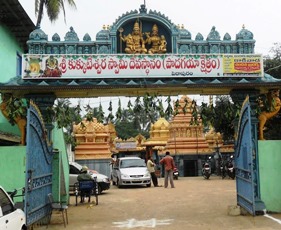 Sri Kukkuteswara Swamy Temple, Pitapuram, East Godavari Dist, Andhra Pradesh
Sri Kukkuteswara Swamy Temple, Pitapuram, East Godavari Dist, Andhra Pradesh
Sri Kukkuteswara Swamy temple is one of the famous temple in India. It is also one of the astadasa Shakti Peeta and also an ancient Shiva kshethra from Krutha Yuga.
-
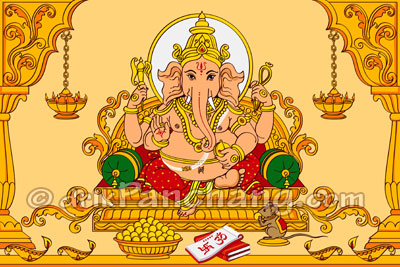 Ganesha Chaturthi Puja Vidhi
Ganesha Chaturthi Puja Vidhi
Lord Ganesha is worshipped with all sixteen rituals along with chanting of Puranik Mantras during Ganesha Chaturthi Puja which is also known as Vinayaka Chaturthi Puja. Worshipping Gods and Goddesses with all 16 rituals is known as Shodashopachara Puja.
-
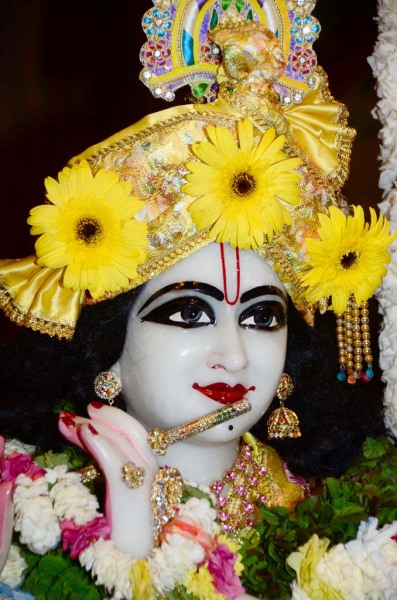 Sri Krishna Janmashtami
Sri Krishna Janmashtami
Janmashtami, the birthday of Lord Krishna is celebrated with great devotion and enthusiasm in India in the month of July or August. According to the Hindu calendar this religious festival is celebrated on the Ashtami of Krishna Paksh or the 8th day of the dark fortnight in the month of Bhadon.
-
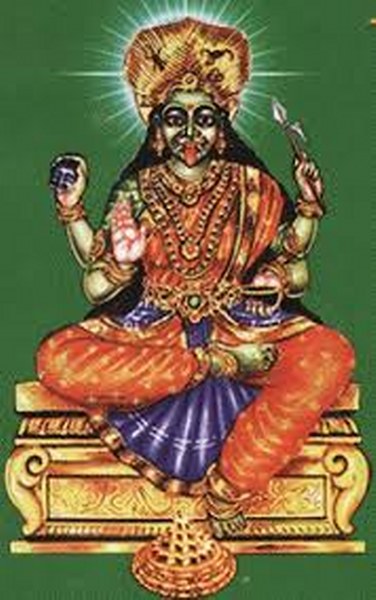 Sri Jogulamba Devi Temple, Alampur
Sri Jogulamba Devi Temple, Alampur
The word "Jogulamba" is derived from "Joginula Amma" (Mother of Joginis). Jogini (also called as Yogini) means a female person, who has given up all the earthly attachments. Jogini also has another meaning which implies a dancer (female) whose life is dedicated to God. Hence, the goddess is also known as Yogulamba or Yogamba.According to Hindu mythology, "Oordhva Danta Pankthi" (upper jaw with tooth) of Devi fell here and the place formed as a Sakthi Peetham.
-
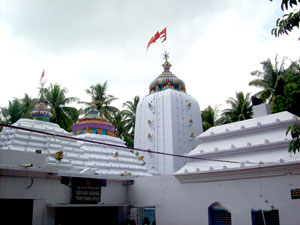 Maa Biraja Devi Temple, Jajpur, Odisha
Maa Biraja Devi Temple, Jajpur, Odisha
The Birja Devi Temple, Jajpur was consecrated as Dakshayanis navel part fallen here. The presiding deity of Jajpur Asta dasha shakti peetha is Goddess Girija Devi. Goddess Girija Devi is also worshiped with various names such as Goddess Birija Devi, Goddess Virija. The temple of Sri Girija Devi is a very small construction when we compare it to Puri Jagannath Temple or Lingraja Temple of bhubaneshwar. Nobody knows the exact time of the Girija Devi temples construction. But it was renovated in the 13th Century. Jajpur is also called as Baithangi Theertha or Birija Kshetram or Oddyana Peetha (an Oddiyana is an ornament worn by a woman around her navel).
-
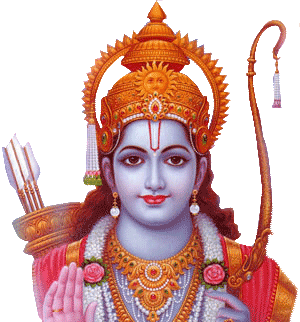 Instructions on how to write Raama Naamam or Likhita Japa
Instructions on how to write Raama Naamam or Likhita Japa
"Ra" is the agni beejam and "Ma" is the amrita beejam. "Ra" indicates the destroyer of ignorance in humans while "Ma" indicates the praana vaayu being nourished. Hence, the great composer, Thyagaraja Swami, a huge devotee of Lord Ram, often stressed on these beejams in his compositions.
-
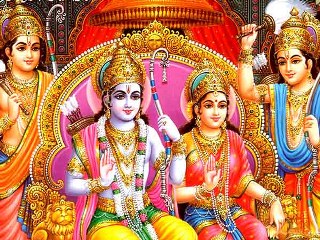 Story Behind Sri Rama Navami
Story Behind Sri Rama Navami
Rama is the in-dweller in every body. He is the Source of Bliss (Atma-Rama) in every individual. His blessing, surging from that inner spring, confers peace and bliss. He is the very embodiment of Dharma, of all the codes of morality that hold mankind together in love and unity
-
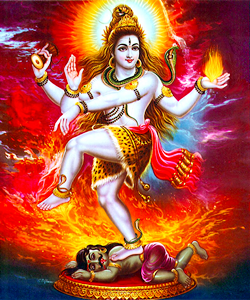 Pancha Sabhai Sthalams / Sthalangal
Pancha Sabhai Sthalams / Sthalangal
Pancha Sabhai Sthalangal refers to the temples of Lord Nataraja, a form of Lord Shiva where he performed the Cosmic Dance. Pancha indicates Five, Sabhai means hall and Stala means place. All these temples are located in Tamil Nadu, India.
-
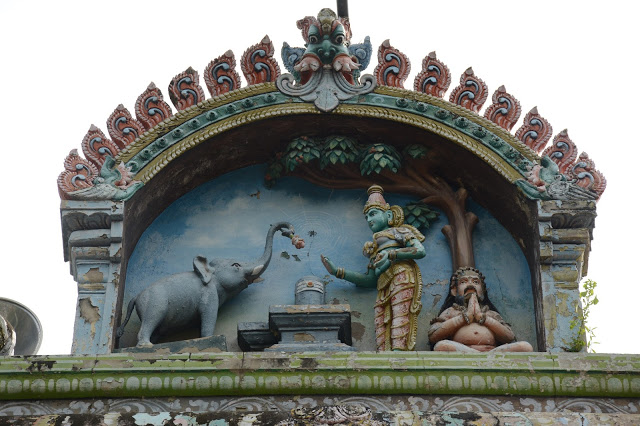 Arulmigu Jambukeswarar Akhilandeswari Temple, Thiruvanaikaval, Trichy, Tamilnadu
Arulmigu Jambukeswarar Akhilandeswari Temple, Thiruvanaikaval, Trichy, Tamilnadu
The temple is one of the Panchabhoota Sthalams (signifying the 5 natural elements) and the sanctum of Lord Jambukeshwara has an underground water stream. And one can see water (neer) coming out of that stream, Hence this temple is also reverred as 'Appu Sthalam' and the ShivaLingam here is called as 'Appu Linga'. The Presiding Deity is Devi Akilandeswari Amman. Akhilandeshwari means 'Ruler of the Universe' (Akilam Universe, Aanda Ruler, Eswari Goddess).
-
 Sri Kalahasteeswara Temple, Srikalahasti, Chittoor, Andhra Pradesh
Sri Kalahasteeswara Temple, Srikalahasti, Chittoor, Andhra Pradesh
Srikalahasti Temple is situated in Chittoor district of the state of Andhra Pradesh. In South India, it occupies a place of eminence among the holy Siva kshetras. The temple is called as Dakshina Kailasam located on the banks of the river Swarnamukhi. The architecture of Srikalahasti Temple-Chitoor is extraordinary, it has three massive Gopurams which are breathtaking. Another striking feature of the temple is its huge Mantapam with hundred pillars.
-
 Pancha Bhoota Stalas
Pancha Bhoota Stalas
Pancha Bhoota Stalam or Pancha Bhoota Stala refers to the five Shiva temples, dedicated to Shiva, the most powerful Hindu god among the thirimurthis and also the most mercyful among them, each representing the manifestation of the five prime elements of nature- land, water, air, sky, fire.
-
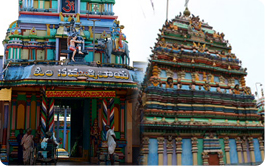 Lord Jaganmohini Keshava Swamy Temple, Ryali, West Godavari, Andhra Pradesh
Lord Jaganmohini Keshava Swamy Temple, Ryali, West Godavari, Andhra Pradesh
Situated between the rivers Vashishta and Gautami, tributaries of River Godavari, is a small village, Ryali, which is known for the temple of Lord JaganMohini Keshava Swamy.
-
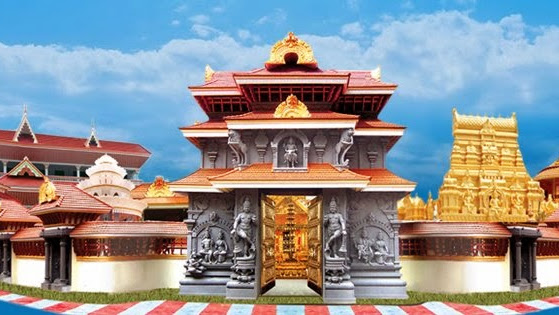 Shri Peringottukara Devasthanam, Kerala
Shri Peringottukara Devasthanam, Kerala
Lord Vishnumaya or Kuttichathan is akin to Sastha, Muruka or Vigneswara but this Sivanandana (The Child of Siva) is worshiped not in common but by a special kind of devotees who need extra ordinary result. ?Vishnumaya is easily pleased and humans? are the words of Devotees. Let us look into the glory of Peringottukara Kuttichathan Vishnumaya. On his way for the divine hunt Lord Siva happens to see Koolivaka, a tribal woman. She was a devotee of Goddess Parvathy.
-
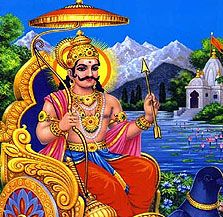 Shani Trayodashi
Shani Trayodashi
Shani Trayodashi is the Trayodashi which falls on a Saturday known as Shani Trayodasi, Shani Jayanti or Shani Pradosham. Shani Jayanti Festival Puja Vidhi, Vrat Katha, Mantra Japa and Yagna Puja
-
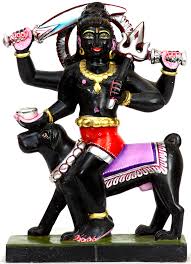 Masik Kalashtami
Masik Kalashtami
Kalashtami, which is also known as Kala Ashtami, is observed every month during Ashtami Tithi of Krishna Paksha. Devotees of Lord Bhairav keep fast and worship Him on all Kalashtami days in the year.
-
 Sri Subrahmanyeswara Swamy Vari Devasthanam, Mopidevi, Andhra Pradesh
Sri Subrahmanyeswara Swamy Vari Devasthanam, Mopidevi, Andhra Pradesh
Natives suffering from Sarpa dosha, Rahu, Ketu dosha and Anapathya dosha, if they worship Lord Subrahmanyeswar at Mopidevi will definitely nullify the negative affects according to texts. The Mopidevi temple is situated at a distance of nearly 70 kms from Vijayawada in Andhra Pradesh. It is well connected by flights and trains from many parts of the country.
-
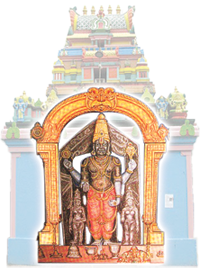 Sri Balaji Temple, Chilkur, Hyderabad
Sri Balaji Temple, Chilkur, Hyderabad
Chilkur Balaji Temple is located at Chilkur in Moinabad mandal in the Ranga Reddy district, Andhra Pradesh, India. One of the famous temples in Andhra Pradesh, the Balaji Temple is believed by many that those who visit the temple will get their desires fulfilled. Unlike any other temple, there will be no hundi in the temples. This is one of the few temples in India which does not accept monetary donations.
-
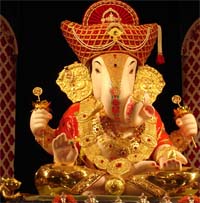 Lord Ganesha Sankashti or Sankatahara Chaturthi Pooja Procedure And Dates In 2016
Lord Ganesha Sankashti or Sankatahara Chaturthi Pooja Procedure And Dates In 2016
Sankashti Chaturthi or Ganesh Sankatahara Chaturti, is dedicated to Hindu God Ganesh. Sankashti Chaturthi January 2016 date is January 27, Wednesday and the Chandrodaya or Moon rise time is 8:57 PM (IST).
-
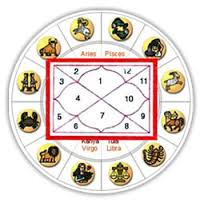 Kuja - Manglik - Mangal Dosha Effect and Remedies
Kuja - Manglik - Mangal Dosha Effect and Remedies
A simple survey shows that as many as 90% of the people in the Universe will be under the influence of Kuja Dosha. Every one of us, at one time or the other, will hear about Kuja. The word is more prominently heard when horoscopes of the bride and bridegroom are studied before their marriage.
-
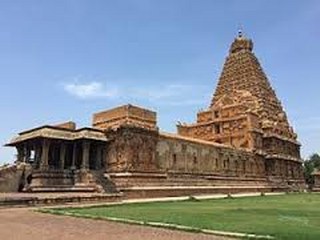 Peruvudaiyaar or RajaRajeshwara Temple, Thanjavur
Peruvudaiyaar or RajaRajeshwara Temple, Thanjavur
The Brihadeeswarar Temple was built to display the emperor's vision of his power and his relationship to the universal order. On the 275th day of his 25th regal year (1010 A.D) Raja Raja Chola handed over a gold-plated kalasam (copper pot or finial) for the final consecration to crown the vimana. Located in the nerve centre of the Chola empire, the temple attracted musicians, scholars, craftsman and merchants. Most notably, it served as a platform for the dancers who excelled in the traditional dance form of Bharatha Natyam. The Cholas were ousted by the Pandyas.
-
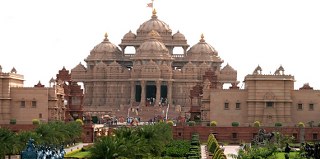 Akshardham Temple, New Delhi
Akshardham Temple, New Delhi
One of the most popular and amazing tourist attractions in the Indian nation is Akshardham temple. Each element of Akshardham echoes with spirituality ?the Mandir, the Exhibitions and even the Gardens. The Akshardham mandir has over two hundred murtis, representing many of the spiritual stalwarts over many millennia. The spiritual premise of Akshardham is that each soul is potentially divine. Whether we are serving the family, the country our neighbors or all living beings the world over, each service can help one move towards divinity. Each prayer is a call towards improving oneself and moving closer to God.
-
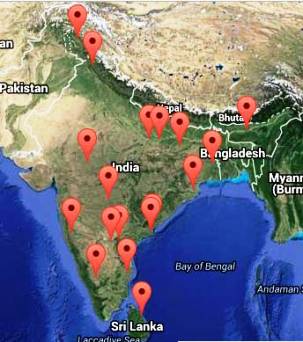 18 Shakti Peethas / Asta Dasa Shakti Peethas
18 Shakti Peethas / Asta Dasa Shakti Peethas
Astadasha Shakthi Peetas Lord Brahma performed a yagna to please Shakti and Shiva. Goddess Shakti emerged, separating from Shiva and helped Brahma in the creation of the universe. Brahma decided to give Shakti back to Shiva. As such, Brahma's son Daksha performed several yagnas to obtain Shakti as his daughter in the form of Sati.
-
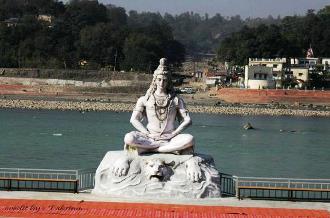 Rishikesh - The Brahmteertha
Rishikesh - The Brahmteertha
The town of Rishikesh lies in the foothills of the Himalayas of the Garhwal region. It is the gateway to the upper Garhwal region and the starting point for the Char Dham pilgrimage (Gangotri, Yamunotri, Badrinath and Kedarnath) and an ideal destination not only for pilgrims but also for the people who are interested in adventure, medtation, yoga and other aspects of Hinduism.
-
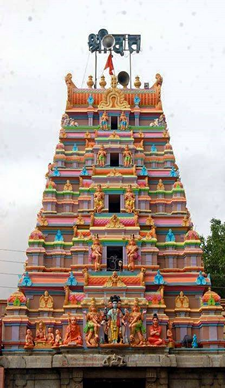 Guru Dattatreya Kshetra, Ganagapur, Karnataka
Guru Dattatreya Kshetra, Ganagapur, Karnataka
Shree kshetra Ganagapur is a holy place of Lord Dattatreya and the place is very important "Darshaneeya kshetra". The place is connected to "Sri Nrusimha Saraswathy Swamy" who is the second incarnation of Lord Dattatreya. Importance of this kshetra was explained by ShreeGuru which can be seen in Shree Gurucharitra. This Nirguna Mutt is adorned with the Nirguna Padukas.
-
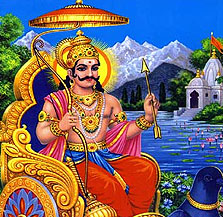 Sri Saneeswara Bhagavaan
Sri Saneeswara Bhagavaan
Shani dev seated on a vulture, dark-colour. Saturn has a strong presence, around face, big powerful eyes, & double chin. His moustache makes him terrified. He has four hands. One of his hand he holds a sword, in the other trident. In his third hand he holds club and the fourth hand he holds the reins of the vulture. Well armed with weapons, Saturn should be mediated on as smiling granting fearlessness.